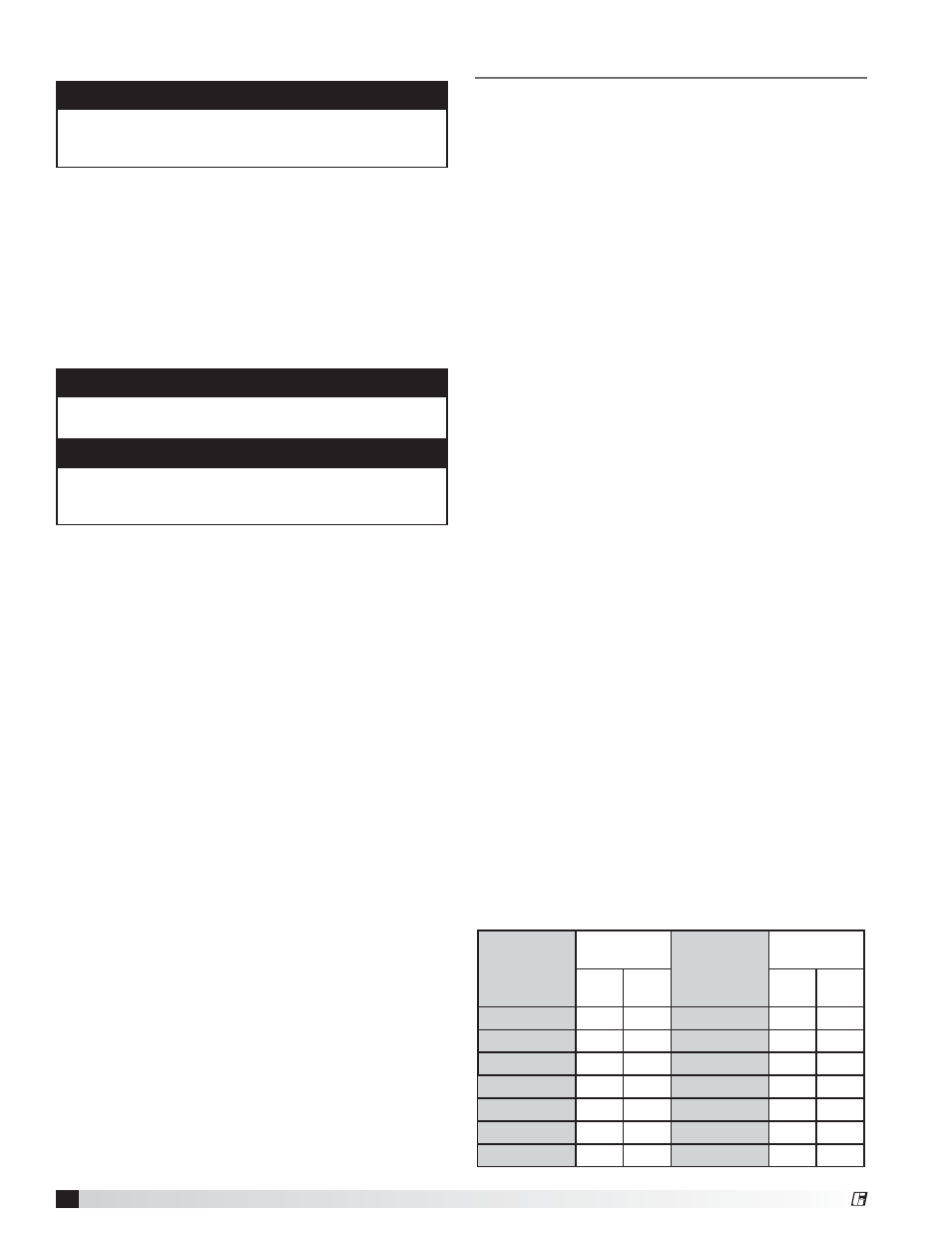Maintenance - fall, Evaporative coolers, Winterizing chilled water coils – Greenheck MSX (470658) User Manual
Page 36: Blowing-out coils, Flushing coils, Cooling coils, Chilled water coils

36
Modular Supply Make-Up Air Unit
®
Maintenance - Fall
Evaporative Coolers
The water should be shut off and all the lines drained
when the outside temperature drops below 45°F.
Remove drain plugs for the winter.
Clean all interior parts of any mineral deposits or foreign
materials that may have built-up during the cooling season.
Replace any worn or non-functioning parts.
Winterizing Chilled Water Coils
During the winter, chilled water coils need to be
protected against freezing. Manufacturer recommends
protecting the coils by either blowing-out the coils or by
flushing the coils.
Blowing-Out Coils
1. Close valves on the supply and return lines.
2. Open drain valves and/or drain plug. Remove vent
plug to allow coil to drain faster.
3. After coil is fully drained, connect a blower to the
caps. Do not connect the blower to the air vent or
drain plug.
4. Close the vent plug on the header that the blower
is connected to. Open the drain valve or cap on the
other header.
5. Turn on blower for 30 minutes. Place mirror at
discharge. If the mirror fogs up, repeat procedure
until no fog appears on the mirror.
6. After drying the coil, wait a few minutes then repeat
Step #5.
7. Leave drains open and do not install plugs until
beginning of cooling season.
Flushing Coils
Manufacturer recommends the use of inhibited glycol
(such as propylene or ethylene) to flush water coils
to protect against freezing. Additionally, the use of
inhibited glycol provides corrosion protection.
The table below indicate the percentage of glycol
required to prevent freezing in a coil at a given outdoor
air freeze point. Completely fill coil with solution. Drain
coil. Residual glycol fluid per these concentrations can
be left in the coil without concern of freezing. Recovered
fluid can be used to flush other coils.
Percent of
Ethylene
Glycol
by Volume
Freeze Point
Percent of
Propylene
Glycol
by Volume
Freeze Point
°F
ºC
°F
ºC
0
32
0
0
32
0
10
25
-4
10
26
-3
20
16
-9
20
19
-7
30
3
-16
30
8
-13
40
-13
-25
40
-7
-22
50
-34
-37
50
-28
-33
60
-55
-48
60
-60
-51
IMPORTANT
Be sure to read and follow the manufacturer’s
recommendations before using any cleaning fluid.
CAUTION
Caution should be used to avoid injury when venting
the coil. High pressure and/or high temperature fluids
can cause serious injuries.
Cooling Coils
Inspect the coil for signs of corrosion and/or leaks.
Repair any leaks as required.
Inspect the coil’s surface for foreign material. If the coil
surface needs cleaning, clean the coil from the leaving
air-side so that foreign material will be washed out of
the coil rather than pushed farther in.
Inspect and clean the drain pan to prevent the growth of
algae and other organisms.
Chilled Water Coils
Test the circulating fluid for sediment, corrosive
products and biological contaminants. Make the
necessary corrective measures.
Maintain adequate fluid velocities and proper filtering of
the fluid.
If automatic air vents are not utilized, periodic venting of
the coil is recommended to remove accumulated air.
WARNING
Repair and replacement of the coil and the connecting
piping, valves, etc., should be performed by a
qualified individual.
